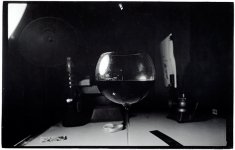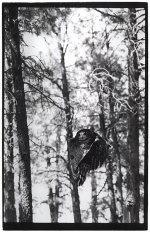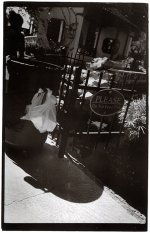I can certanly see why people prefer not to crop. It can make things quicker in the darkroom, as no easel blades need moving or colums racking up/down and refocusing, but back to the purity/getting things right in camera angle:
Not all cropping is retrospective. Its not as if those who crop only look at their images in the darkroom and go, "darn it, I did not see that hand sticking into the frame. I will crop it out" or "messed that up again, lets take that out." Frequently one sees what one needs well before even releasing the shutter and it may or may not conform to the format or FL you are using. I mainly shoot 35mm and 6x7 and find that although I mostly do compose with that format in mind, not infrequently do I find 6x7 stubby or 35mm too long. I am often aware that the frame needs cropping before I even fire the shutter. MY question would be this:
If I see the image I want before firing the shutter (and think it needs a slight change in aspect ratio to look as I want to present it, for example), shoot the frame and then print it to that aspect ratio (by cropping) in what way have I done anything other than perfectly recorded and presented
the print the way I intended?
I think it is worth remembering that it is the print we all strive for and the negative is merely somewhere in between vision and print. The neg is a tool, an intermediary and not an end in itself so surely is rendered irrelevant beyond its ability to deliver the print we desire.
In HCB's day - or at least when he started - wide/long lenses were either uncommon or expensive or both (I believe), so it is not surprising that he used a 50mm. Having honed his skills with this FL, it is not a surprise that he largely stuck with it, because lens changes on the hoof for truly unpredictable decisive moments wont get you far.
With RFs, when the action is unpredictable, I tend to commit to a FL and then use your feet and guile to make the shot happen as best you can. There is compromise, btu also benefit. I shoot various FLs, but it is always the same one that is on as my default (35mm, a personal choice). As I move about, I may decide to change my default to something else, but when I am unable to predict at all what might unfold and where, I will plug for the 35. I think this, more than anything, combined with the relative lack of wides back in the day, explains why HCB shot mostly with a 50mm. It was not because he thought other FLs unworthy, just that he had limited options, became attuned to working with a 50 and would have to have reprogrammed himself to work any other way.
I think the following are true:
- Become able to shoot instinctively with a smallish number of FLs and you will be a better photographer. Sure, use as many as you like (especially when you have time, but know some intimately for when you have no time to think or mess about with kit).
- Try to get it right in camera. Do not shoot in the hope that you can crop out a better composition later. Know what you want the final image to look like and endeavour to shoot that image.
However, the above can easily become perverted into:
- Shoot only one FL if you want to become a better photographer.
- Don't crop your images. doing so only proves you did not get it right at the taking stage.
PS I am glad Roger made references to religion, because that was one of the first parallels that struck me in terms of how messages can become, shall we say, twisted into absolute laws that may not bear too much relation to the original intent. We humans are good at that. Its funny how we all realise that we are fallible but then attribute infallibility to others.




